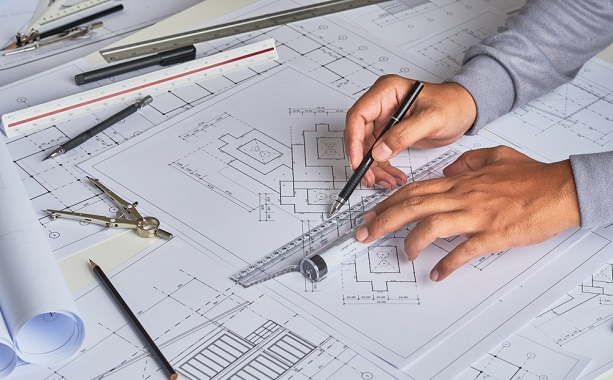Janjic Architecture Fundamentals Explained
Janjic Architecture Fundamentals Explained
Blog Article
Getting My Janjic Architecture To Work
Table of ContentsUnknown Facts About Janjic ArchitectureGetting My Janjic Architecture To WorkJanjic Architecture Fundamentals Explained3 Simple Techniques For Janjic Architecture
Engineers are professionals who create structures and various other structures, guaranteeing they are both useful and aesthetically pleasing. They are accountable for developing areas that meet the demands of individuals who utilize them while additionally thinking about safety and security, sustainability, and conformity with building laws. Designers take into consideration safety, functionality, ecological effect, power effectiveness, and local zoning regulations while creating designs for numerous sorts of structures, including household, commercial, public structures, and even specialized frameworks like hospitals and institutions.
Architects do a lot even more than layout visually pleasing buildings. An architect's particular responsibilities change from task to project, but common tasks include:: Developing structure concepts and layouts, consisting of theoretical sketches, 3D versions, and renderings to visualize the last product.: Preparing detailed illustrations and strategies utilizing innovative software application such as AutoCAD, Revit, SketchUp, or an additional device, making certain that all technological specifications are included.: Teaming up with clients, engineers, service providers, and various other stakeholders to integrate comments, ensure the layout satisfies client needs, and keep alignment with project objectives.
: Making certain jobs adhere to building regulations, zoning laws, safety and security laws, and ease of access standards to guarantee the safety and security, legitimacy, and top quality of the last structure. Architects use a lot of hats in their everyday work, so the abilities needed to be effective as an architect are diverse. Some vital skills you require to work as a designer include:: Integrate visual charm with functionality to produce lovely and sensible spaces.: Apply innovative mathematics principles, including geometry and physics, to ensure layouts are safe and functional.: Settle design-related and legal issues successfully to keep projects on track.: Guarantee every element of the design is accurate to stay clear of setbacks.: Collaborate properly with clients, engineers, specialists, and various other professionals.: Work well with others to bring tasks to fulfillment, coordinating with various stakeholders.: Take ownership of tasks and inspire teams to ensure successful implementation.
Some pupils select to gain both the B - Residential Architect.Arch and the M.Arch; however, this is not a requirement for licensure. If you have a four-year bachelor's degree in design or one more technique, you can gain an M.Arch and get style licensure. Becoming a designer calls for extensive training and a broad array of coursework
Janjic Architecture Fundamentals Explained
These courses prepare students for the varied challenges of building technique, equipping them with the skills required to do well in their professions. Ending up being an engineer requires devotion, creative thinking, and a clear understanding of the steps entailed. From education and learning to licensure, this guide provides a general roadmap for striving engineers to browse the course toward a successful career in style.
There are a couple of various courses to coming to be a designer, but the 2 listed below are the primary ways:: This is a five-year undergraduate program that offers fundamental knowledge in building layout, history, concept, and modern technology. It is among one of the most usual courses to ending up being an architect.: The M.Arch is a graduate-level program for trainees that already hold a bachelor's degree.
This multi-division test examinations your skills and understanding of design. The current version of the examination is called ARE 5.0 and includes 6 divisions. These departments may be taken in any type of order yet have to be passed within five years to receive design licensure. See Kaplan's ARE Examination Resource Center to find out about the ARE 5.0.
After getting your certificate, you can officially practice as an engineer and begin working separately or with a company. While obtaining a state certificate enables you to practice within that jurisdiction, acquiring NCARB accreditation can make it much easier to expand your practice to various other states. The NCARB Certificate is a credential that assists in reciprocity, allowing you to work throughout several territories.
An Unbiased View of Janjic Architecture

(https://www.buzzfeed.com/janjicarch)Building can be equivalent parts exciting and demanding. It's interesting to see your vision come to life, you might feel overwhelmed by timetables, repayments, and unexpected circumstances. Our company believe one of the most successful jobs happen when the designer plays an energetic duty in building and construction, and throughout the procedure, we stay in constant communication with our clients and their contractors.
The Best Guide To Janjic Architecture
Before diving right into assumptions, we should initially explain the duty of a designer in building and construction. Many of an engineer's job happens prior to building and construction starts, they remain on the job until conclusion. Furthermore, an engineer assists in interaction between the specialist and the structure proprietor. Interaction circulations will vary depending upon your task delivery technique.
On many jobs, nonetheless, you will mainly interact with your architect. Especially, you can expect your designer to execute the complying with responsibilities: Before building and construction begins, your architect will certainly develop assumptions with you and your professional.

Report this page